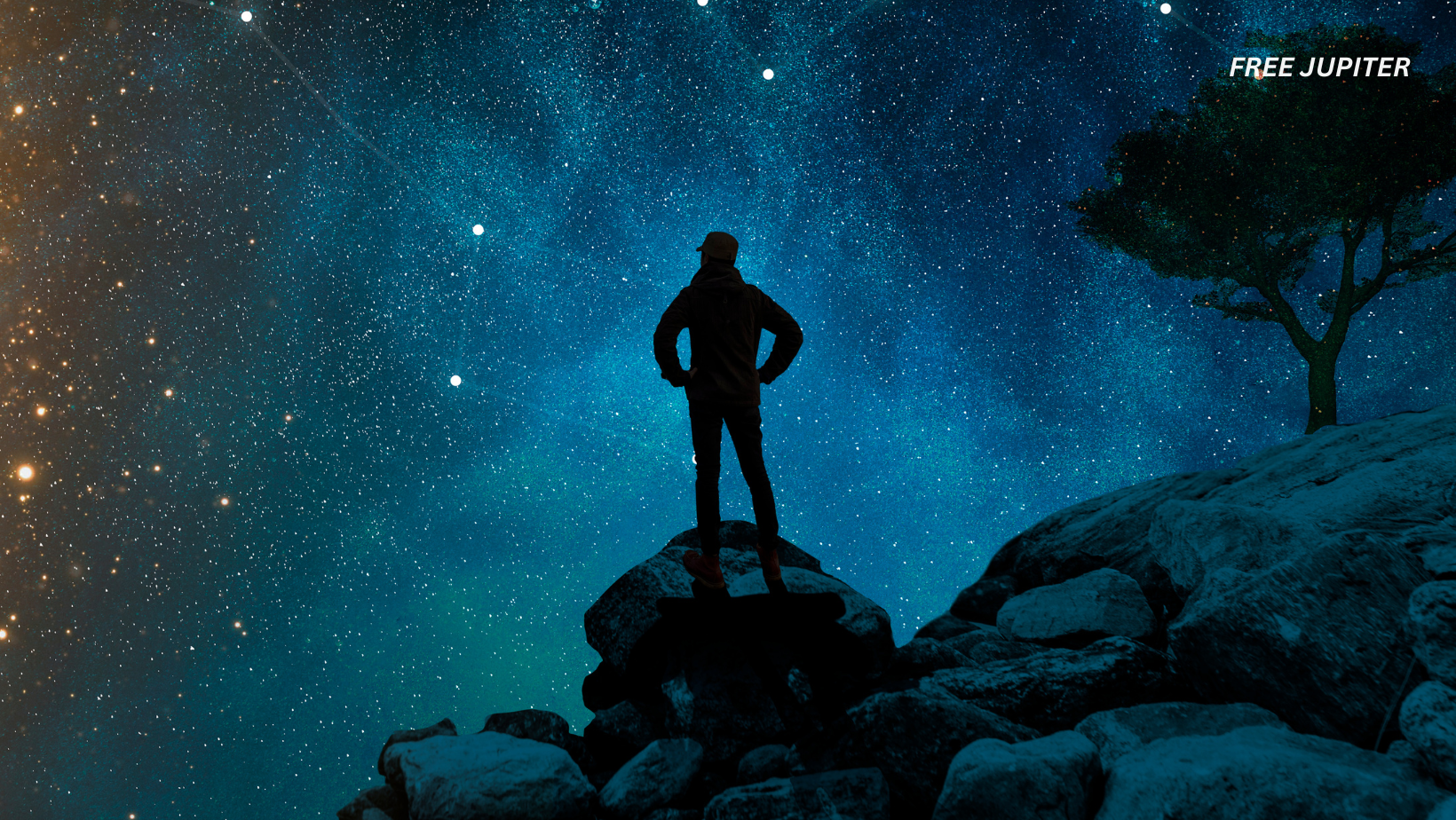From the quiet heather-covered hills of Northern England to the remote wilderness of South Africa, a new kind of wellness retreat is gaining quiet traction. It’s not loud, intense, or overly structured. It’s simple, cosmic—and profoundly calming. It’s called star bathing, and its quiet revolution is helping people rediscover awe, tranquility, and a deep sense of connection.
The evening air was crisp and still, a whisper of wind stirring the heather beneath a vast, slowly darkening sky. Somewhere in the heart of the Yorkshire Moors, a solitary bathtub had been placed in the wild. Nestled into the open landscape, it served not as a place for cleaning the body, but for cleansing the mind. Inside it, wrapped in blankets, I lay motionless, gazing upward.
Overhead, the sky was slowly deepening in color—first cobalt, then a rich, inky navy—revealing one star, then another, and soon, a multitude. Beside me, in another vintage bathtub, a guide named Gemma softly led a meditation. Her voice was calm and low, like the hush of the earth itself.
“Allow the view above to humble you,” she encouraged gently. “Notice how rare this moment is, how sacred. Just breathe, and be.”
The experience felt surreal at first. A part of me resisted—cold, self-aware, skeptical. But another part, weary from years of unrelenting anxiety, desperately sought refuge. That search had already taken me through a carousel of wellness practices: wild swimming in icy streams, rhythmic drumming, silent yoga sessions. Now, it had brought me to the stars.
Unlike traditional astronomy, star bathing isn’t about identifying constellations or naming planets. Instead, it’s about surrender—allowing oneself to be enveloped by the night sky, absorbing its stillness and letting go. This practice is quietly gaining popularity at retreats and wellness centers worldwide. And, as recent studies suggest, the psychological and physiological benefits may be more significant than once imagined.
Wrapped in soft layers, I had joined a weekend retreat at Broughton Sanctuary—an estate that dates back to the 16th century and sits on the edge of the Yorkshire Dales National Park. The sanctuary spans 3,000 acres, much of it rewilded, making it one of the UK’s largest ecological restoration projects. The land, once tamed, is now gently returning to its natural rhythms. And nestled in this returned wilderness, guests are invited to slow down—and look up.
As the meditation came to a close, silence reclaimed the moor. An owl called from somewhere in the distance. Overhead, the sky grew darker, as if pulling a velvet curtain closed. More stars emerged. And gradually, without realizing it, my breath slowed. Something within me began to shift. A realization settled in: I wasn’t merely looking at the universe—I was within it. That moment of connection, however fleeting, felt profound.
Read more: One Simple Exercise Can Reduce Anxiety By 20%, Mental Health Expert Says
According to astrophysicist and mindfulness guide Mark Westmoquette, awe is not merely a poetic feeling. Its effects are rooted in science. Regular experiences of awe have been shown to reduce inflammation, increase levels of oxytocin, and lower heart rates. “Awe reminds us that we are part of something much larger than ourselves,” Westmoquette explains. “It provides a perspective shift that helps us transcend the small worries and stressors of daily life.”
While the mental health benefits of time spent in natural settings have been widely acknowledged, only recently has attention been turned toward the unique experience of being immersed in a natural nighttime environment. A growing body of research is now exploring the link between mental well-being and a connection to the night sky.
One promising step in this direction came in early 2024, with the publication of the Night Sky Connectedness Index in the Journal of Environmental Psychology. The index found a positive correlation between individuals who felt a connection to the stars and their reported levels of happiness and psychological well-being. Meanwhile, the Office of Astronomy for Development—an initiative combining efforts from the International Astronomical Union and South Africa’s National Research Foundation—is exploring how stargazing can serve as a low-cost, high-impact tool for supporting mental health in vulnerable populations.
Later that night, after warming up with hot chocolate, our small group made its way down from the hillside. Heads remained tilted skyward. None of us wanted to stop looking. The night had revealed itself like a secret, and the longer we gazed, the more brilliant the stars became.
The following evening brought more cosmic wonder. After a day of spa treatments, exploring the sanctuary’s grounds, and a quick, bracing dip in a cold reservoir, I joined a special session hosted as part of the annual Dark Skies Festival. The evening began with a vegetarian meal around a fire in a woodland structure known as the “fire temple.” Then, led by astronomer Chris Higgins, we moved to the sanctuary’s kitchen garden, where a telescope had been set up.
Through that lens, the universe felt closer. Venus glowed like a crescent. Jupiter loomed massive, its moons aligned like pearls on a string. The telescope passed from hand to hand, and with each “wow” and whispered gasp, the group seemed to grow more connected. Laughter, wonder, and the cold night air blurred together. Nobody wanted to leave.
For many, this newfound connection to the stars continues long after the retreat ends. Back home in Bristol, I now step outside on clear nights with a blanket and lie in my small garden. The city’s light pollution dims the sky, yet even here, a few stars manage to shine through. And somehow, those few are enough.
It appears that star bathing is not confined to one region or climate. Around the world, similar retreats are inviting guests to explore this celestial reset. In South Africa’s Cederberg Wilderness, Bliss & Stars offers off-grid retreats just two hours from the nearest village. Founded in 2019 by Daria and Heine Rasmussen, the center offers three-day immersions in starlight, complete with guided night hikes, breathwork under the stars, and cosmic meditations.
Read more: Physicists Think They’ve Finally Seen The Elusive Evidence of String Theory
Profound experiences are not uncommon there. One guest, long numbed by trauma, reported a sense of spiritual release after witnessing the rings of Saturn—describing it as a kind of emotional exorcism. Another, a mother in mourning, said she found comfort during a silent night under the stars, as if the universe itself was grieving with her.
Further afield, Chile’s Atacama Desert offers perhaps the clearest, darkest skies on the planet. There, at Elqui Domos Hotel, guests can sleep beneath retractable domes designed for direct night-sky viewing from the comfort of their beds. Iceland’s Hotel Ranga takes a different approach, blending the ruggedness of the Arctic with luxury. Stargazing sessions are held from geothermal hot tubs, with an onsite observatory enhancing the view.
In the Scottish Highlands, the practice has a cozier twist. Star-bathing parties organized by Cairngorm Excursions invite guests to wrap themselves in blankets, sip hot drinks, and enjoy the night sky from wooden log seats. Traditional Scottish dishes like stovies are served alongside whisky and gin tastings—bringing both warmth and wonder.
Indigenous connections to the cosmos are also receiving renewed interest. Aboriginal Australians—believed to be among the world’s earliest astronomers—have long woven stories of the stars into their culture. Tours like those run by Ngurrangga in Western Australia allow guests to camp in remote parks while learning these ancient star stories. In Sydney, cruises aboard Fantasea vessels blend storytelling and stargazing, guided by Aboriginal astronomers.
Read more: How Science Suggests That ‘God’ May Have Created the Universe
These experiences, whether rustic or refined, seem to point to the same universal truth: we are meant to look up. It may not matter where one is—on a remote moor, in a desert, beside an ocean, or simply in a city garden. The stars remain.
As Westmoquette so beautifully puts it, “Even if you see only one star—that light has traveled across the universe for hundreds of years to reach your eyes. It found you. That matters.”
In an age where noise is constant, attention is fragmented, and stress is near-ubiquitous, the stars offer something different. They ask nothing. They offer everything. And in their quiet presence, many are beginning to rediscover something deeply human: peace.










